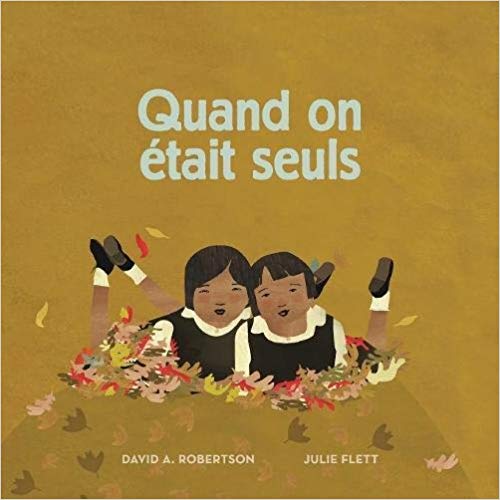I’ve been making a big effort to integrate more non-textbook style reading into my French as a second language classes over the past few years. I vividly remember the moment at which I started to understand French books on my own without translating, and the excitement of having access to new ways of expressing thinking and identity. I hope that in some small way I can recreate that experience for my students.
I have volunteered to be part of a resource review committee at the district level whenever there are new books to be added, and it’s been a really rewarding experience. I get to spend a day reading as many books as I can in a team with another reviewer, ensuring that the text aligns with our curriculum, and talking about how and where we could use them. We build collegial connections, deepen our understanding of the curriculum, and develop ideas for new ways to engage our students in reading in their second language.
I recently purchased three new books with First Nations connections for my classes, and wanted to share them here.

“Parfois je suis un renard” (“Sometimes I feel like a fox”) by Danielle Daniel
I heard about this book through a colleague who was planning to use it in her art classes and invited other teachers to collaborate and adapt its use for other subject areas. I was immediately captivated by the illustrations and the simple poetry of the text, and I knew I wanted to use it with my students.
From the book jacket: “In this introduction to the Anishinaabe tradition of totem animals, young children explain why they identify with different creatures such as a deer, beaver or moose. Delightful illustrations show the children wearing masks representing their chosen animal, while the few lines of text on each page work as a series of simple poems throughout the book.
In a brief authors note, Danielle Daniel explains the importance of totem animals in Anishinaabe culture and how they can also act as animal guides for young children seeking to understand themselves and others.”

“Les mots volés” (“Stolen words”) by Melanie Florence, illustrations by Gabrielle Grimard
From the book jacket: “When a man’s granddaughter asks him how to say ‘grandfather’ in Cree, it unleashes a river of emotion when he admits that he doesn’t know his language anymore. Seeing her grandfather upset, she helps him find his words again.
This sensitive, beautifully illustrated picture book explores the intergenerational impact of the residential school system that separated young Indigenous children from their families. The story recognizes the pain of those whose culture and language were taken from them, how that pain is passed down, and how healing can also be shared.”

“Quand on était seuls” (“When we were alone”) by David E. Robertson and Julie Flett
From the book jacket: “When a young girl helps tend to her grandmother’s garden, she begins to notice things that make her curious. Why does her grandmother have long, braided hair and beautifully coloured clothing? Why does she speak another language and spend so much time with her family? As she asks her grandmother about these things, she is told about life in a residential school a long time ago, where all of these things were taken away. When We Were Alone is a story about a difficult time in history, and, ultimately, one of empowerment and strength.
When We Were Alone won the 2017 Governor General’s Literary Award in the Young People’s Literature (Illustrated Books) category, and was nominated for the TD Canadian’s Children’s Literature Award.”
Using these stories in my classes
I will be using these books to explore big ideas with my students like the following:
- inferring and describing characters’ feelings
- considering/comparing how experience affects point of view
- describing the reader’s empathy response and explaining learning from characters’ experiences
- finding clues to infer and explain lessons taught by characters
- describing the role of place and seasons in a story
- exploring cultural connections and questions of identity
- comparing stories of generational connection and change
I’m adapting my big ideas from The Ramped Up Read-Aloud by Maria Walther, and combining them with curricular skills and core competencies from the BC curriculum.
The personal narrative and simple format of these stories, accompanied by pictures, is immediately engaging and draws students in to the stories. Keeping the stories short with beautiful illustrations and the rhythm of poetry also helps. Through the voices of the characters, I want my students to begin to explore questions of identity, and to have the opportunity to consider new perspectives that they wouldn’t normally hear.
Each of these stories begs to be read out loud and expressed through art. This is a perfect opportunity for me to read aloud to my classes, and for them to read to one another or explore oral storytelling with the use of images and puppets. Because they take on complex ideas in a child friendly format, these are excellent anchor books to allow for personal storytelling and open the door for much deeper engagement than traditional reading activities for second language classes.
